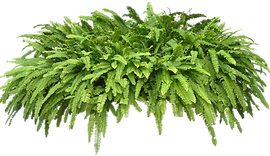

Credit: Thomas Kincade

MISSION
-
A Charitable fund to fill the space between finance and rural revitalization
-
Whole systems approach to rural community development
-
A Consortium of interdisciplinary Leaders
-
Education and training is our core activity for future resilience
-
Relocalization of industry to provide meaningful livelihood
-
Holistic health and wellness services for human thriving
-
Clean Energy, Technology & Scientific research
-
Regenerative Ecosystem and animal welfare
-
Lessening the burden on government
Help us bring the vision to life...
VISION
The overall vision of Rainbird Rising, NSP, along with the resulting Rainbird Villages, is to build a movement which will eventually create whole systems, resilient villages across rural America that include the infrastructure for Jobs, Housing, Education, Health & Wellness, Regenerative Agriculture, Clean Energy, Secure Telecom, Trade, Community Conviviality, and Personal Thrivability where people can enjoy life, liberty, and pursuit of happiness free from the conventional extractionist economic treadmill.


Welcome to Rainbird Rising
a 501(c)(3) nonprofit service provider












Many rural areas in the U.S. have experienced significant population loss
and economic decline
The U.S. Census Bureau indicates that a considerable number of rural counties have seen population decreases, with some estimates suggesting that over 2,000 rural towns have faced severe declines or even gone extinct in recent decades.
Factors contributing to this decline include:
-
Economic Shifts: Changes in industries, such as agriculture and manufacturing, have led to job losses in many rural areas.
-
Migration Trends: Young people often leave rural towns for urban areas in search of better opportunities, leading to an aging population.
-
Infrastructure Challenges: Many rural communities struggle with inadequate infrastructure, limited access to services, and declining public investments.
These trends raise concerns about the future viability of rural communities and highlight the need for targeted efforts to support revitalization and development in these areas.
Rural businesses have migrated to city ownership
Several types of rural businesses have increasingly migrated to urban ownership or have seen urban entrepreneurs invest in or establish operations in rural areas. Some of these include:
-
Agriculture and Food Processing: Many agribusinesses, including food processing plants and distribution centers, have shifted focus toward urban centers for better access to markets and consumers.
-
Retail Stores: Local retail businesses, such as grocery stores and specialty shops, have often been acquired by urban-based owners, leading to a shift in the types of goods and services available in rural areas.
-
Tourism and Hospitality: Urban investors have shown interest in rural tourism businesses, including bed-and-breakfasts, vacation rentals, and recreational facilities, often revitalizing local tourism.
-
Tech Startups: With the rise of remote work, some tech startups are emerging in rural areas but may have urban ownership or funding, contributing to economic activity in those regions.
-
Healthcare Services: Some rural healthcare facilities have been acquired by larger urban health systems, changing the dynamics of healthcare delivery in rural communities.
-
Craft and Artisan Goods: Urban entrepreneurs are increasingly investing in rural artisanal businesses, such as breweries, wineries, and crafts, often seeking unique local products.
In the last 20 years, the U.S. has seen a significant decline in the number of small farms. According to the U.S. Department of Agriculture, about 200,000 small farms have gone out of business since the early 2000s. This decline is attributed to various factors, including economic pressures, competition from larger agricultural operations, rising costs, and challenges in accessing markets.
While small farms continue to represent a fairly large percentage of total farms in the U.S., their numbers have been decreasing, raising concerns about the future of family-owned farming and its impact on local economies and food systems. Efforts to support small farms, including grants, educational programs, and local food initiatives, are of somewhat questionable value. A more systemic approach is needed.
Status of Agriculture in America
Agriculture in America is a complex and evolving landscape influenced by various economic, environmental, and social factors. Here are some key aspects:
-
Economic Trends: The agricultural sector contributes significantly to the U.S. economy, but farmers often face fluctuating commodity prices and increasing production costs. While some crops, like corn and soybeans, remain staples, there’s a growing interest in organic and specialty crops.
-
Technological Advancements: Precision agriculture, which uses data analytics, GPS, and drones, is transforming farming practices. These technologies help improve yields and reduce waste, making farming more efficient and sustainable.
-
Sustainability and Environmental Concerns: There’s a growing emphasis on sustainable farming practices to address climate change and environmental degradation. Practices like crop rotation, cover cropping, and reduced pesticide use are gaining traction.
-
Rural Development and Community Issues: Many rural areas are struggling with population decline and economic challenges. Initiatives aimed at supporting local economies, enhancing infrastructure, and providing access to resources are crucial for revitalizing these communities.
-
Policy and Regulation: Farm policies, including subsidies and trade agreements, play a significant role in shaping the industry. The Farm Bill, renewed every five years, addresses issues like crop insurance, conservation, and nutrition programs.
-
Labor Challenges: The agricultural workforce often faces labor shortages, exacerbated by immigration policies and the seasonal nature of many farm jobs. There’s ongoing debate about the need for reform to ensure a stable labor supply.
-
Consumer Trends: There’s a rising demand for local, organic, and sustainably produced food, influencing farming practices and market dynamics. Direct-to-consumer sales, such as farmers' markets and CSAs (Community Supported Agriculture), are becoming more popular.
Overall, American farming is at a crossroads, balancing tradition with innovation and responding to changing consumer preferences and environmental challenges.
The average age of an American farmer is around 57 years old, according to recent data from the U.S. Department of Agriculture. This aging demographic highlights concerns about the future of farming in the U.S., as many farmers are nearing retirement age without a sufficient number of younger farmers entering the industry to take their place. Efforts to attract younger generations into agriculture, such as educational programs and access to land, are increasingly important to address this issue.
Small farms, typically defined as those with less than $250,000 in annual sales, make up a significant portion of U.S. producers, but while they represent about 90% of all farms, they account for only about 25% of total farmland acreage. This indicates that most farmland is owned by larger operations, but small farms play a crucial role in local economies and food production, especially in niche markets and sustainable practices.
As of recent estimates, organic farmland in the U.S. accounts for about 1-2% of total agricultural acreage. The growth of organic farming has been significant over the past couple of decades, driven by consumer demand for organic products.
Regenerative agriculture, which focuses on improving soil health and biodiversity, is more challenging to quantify because it encompasses a variety of practices rather than a specific certification. However, interest in regenerative practices is growing among farmers and consumers, and various initiatives aim to promote and measure its adoption.
Overall, while organic farming remains a small percentage of total farmland, both organic and regenerative practices are gaining traction as more farmers seek sustainable methods.
Concerns about the nutritional quality of American food
Concerns about the nutritional quality of American food stem from several factors:
-
Processed Foods: A significant portion of the American diet consists of highly processed foods that are often high in added sugars, unhealthy fats, and salt. These foods typically lack essential nutrients, contributing to poor dietary habits.
-
Food Deserts: Many communities, especially in low-income areas, lack access to fresh, healthy food options. This can lead to diets that are heavily reliant on processed foods, impacting overall nutrition.
-
Agricultural Practices: The focus on high-yield monoculture farming can affect soil health and the nutritional quality of crops. Some studies suggest that modern farming practices may lead to lower nutrient levels in fruits and vegetables compared to those grown in diverse, organic systems.
-
Rising Obesity Rates: The prevalence of obesity and related health issues in the U.S. is linked to dietary patterns that prioritize convenience and calorie-dense foods over nutrient-rich options. This has sparked public health campaigns to encourage healthier eating.
-
Consumer Awareness: There’s a growing awareness among consumers about nutrition, leading to increased interest in organic, local, and whole foods. This shift is prompting some changes in agricultural practices and food production.
Overall, while there are challenges regarding the nutritional quality of food in America, there is also a movement towards healthier, more sustainable food systems that aim to address these issues.
Relationship between Chronic disease and diet?
Yes, there is a well-established relationship between diet and chronic diseases. Several key points illustrate this connection:
-
Obesity: Poor dietary choices, such as high consumption of processed foods, sugary beverages, and unhealthy fats, can lead to obesity, a major risk factor for various chronic diseases, including heart disease, diabetes, and certain cancers.
-
Heart Disease: Diets high in highly processed seed oils, trans fats, and sodium can contribute to heart disease. Conversely, diets rich in fruits, vegetables, holistically managed meats, and healthy fats (like those found in nuts and fish) are associated with lower risks.
-
Diabetes: High sugar and refined carbohydrate intake can increase the risk of developing type 2 diabetes. A balanced diet that includes fiber-rich foods can help regulate blood sugar levels and improve insulin sensitivity.
-
Digestive Disorders: Diets low in fiber can lead to digestive issues, including constipation and inflammatory bowel diseases. High-fiber diets promote gut health and may reduce the risk of colorectal cancer.
-
Cancer: Certain dietary patterns, such as high intake of feed-lot raised and processed meats and low consumption of fruits and vegetables, are linked to an increased risk of certain cancers. Nutrient-rich diets can help reduce this risk.
-
Mental Health: Emerging research suggests a link between diet and mental health conditions, such as depression and anxiety. Diets high in processed foods and low in nutrients may negatively affect mental well-being.
-
Inflammation: Chronic inflammation is linked to various diseases. Diets rich in antioxidants and anti-inflammatory foods (like fruits, vegetables, grazed meats, and healthy fats) can help combat inflammation.
Overall, a balanced, nutrient-dense diet plays a crucial role in preventing and managing chronic diseases, highlighting the importance of dietary choices for long-term health.










Credit: Thomas Kincade
CREATING WHOLE SYSTEMS RURAL VILLAGES...
Artists and poets have given us a rather idyllic and romanticized image of what it is like to live in the country. While reality paints quite a different picture, many people are still drawn to rural places as a dream for their future. A recent article in The Federalist states that 20 million people are wanting to relocate. They want less crime and more security, a better trust in their community, and a cleaner, healthier environment. Also desirable are more freedom, space, peace and quiet, more natural beauty and sense of place.
Many people are wanting greater sovereignty in their ability to provide for themselves and their families. They are uncomfortable with the job options that they are facing and the economic realities of their present location. Some have health concerns and need better food and activity.
Others are desiring a different kind of education and/or skill training that is not available to them currently. Modern education is seriously lacking in practical and survival based knowledge. Learning to live in concert with nature requires a new kind of institution.

What are we doing?
We are providing the means to create Human Health & Thriving within Healthy Environments in the rebuilding of Rural America.
How will we do it?
-
Updating and building missing features for existing rural municipalities.
-
Greenfield projects which create new town and village municipalities.
What results are we desiring?
-
Increased rural profitability and diversification
-
Better food, water, and air quality
-
Purposeful livelihoods
-
Greater sense of community security
-
More hands-on education
-
A larger shared commons
-
Happier, more cordial relations with cities

History and Profile
Associated company, Rainbird Village was founded in 2014 when the founders realized that many of our modern institutions were unable to provide a future where people could thrive. The most basic needs of society were being damaged and polluted: Food, Water and Air. Young people were finding it increasingly difficult to transition into productive adulthood as they were not proficient in the skills which were taken for granted in former generations. Student debt was enslaving many of them. Our modern technologies are very engaging and in some cases addictive, but in spite of their advantages and advancements, humanity is in many ways more bereft of meaning and purpose than ever before. Villages are the smallest microcosm of autonomous human interactions and so that became the focus for change. Rainbird focuses on creating whole systems, regenerative institutions in order to lower the cost to nature and our own wellbeing. Rainbird Rising has been founded to address the most important issues of funding the Rainbird Village concepts.























SOLUTIONS










